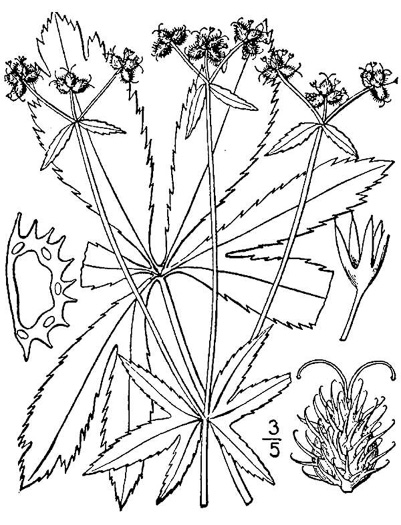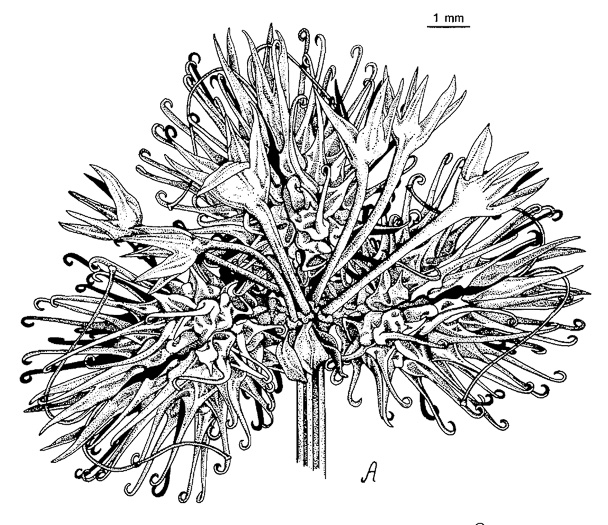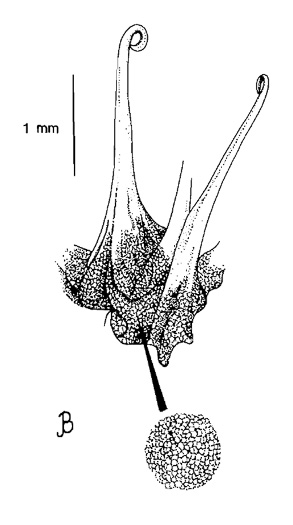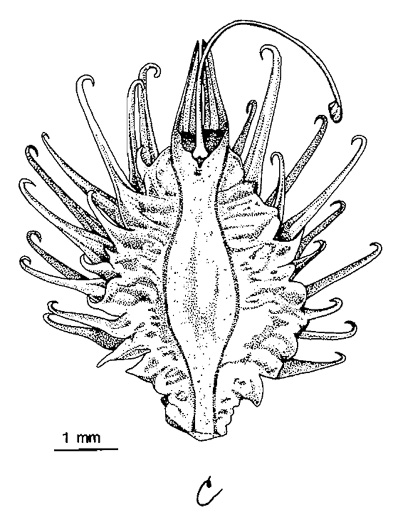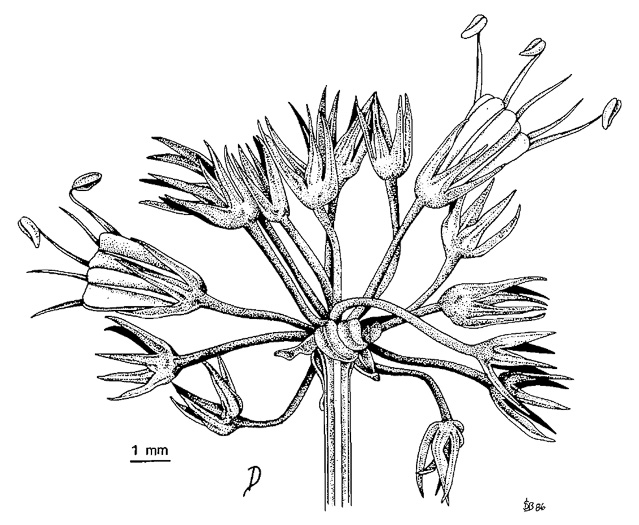Spermatophytes (seed plants): Angiosperms (flowering plants): Eudicots: Core Eudicots: Asterids: Campanulids: Apiales
WEAKLEY'S FLORA OF THE SOUTHEASTERN US (4/14/23):
Sanicula marilandica
FAMILY
Apiaceae
Go to FSUS key
Dig deeper at SERNEC, a consortium of southeastern herbaria.
Read more about Black Snakeroot at Vascular Plants of North Carolina.
The styles of Sanicula marilandica are more than twice as long as the calyx, conspicuously exserted from calyx and recurved; the umbellets dimorphic, some polygamous and others staminate only... Learn more from Pryer & Philippe (1989).
SYNONYMOUS WITH
PLANTS NATIONAL DATABASE:
Sanicula marilandica
FAMILY
Apiaceae
SYNONYMOUS WITH Floristic Synthesis of North America. BONAP (Kartesz, 2021)
Sanicula marilandica
SYNONYMOUS WITH Floristic Synthesis of North America (Kartesz, 1999)
Sanicula marilandica
SYNONYMOUS WITH A synopsis of the genus Sanicula (Apiaceae) in eastern Canada (Pryer & Phillippe, 1989)
Sanicula marilandica
SYNONYMOUS WITH VASCULAR FLORA OF THE CAROLINAS (Radford, Ahles, & Bell, 1968) 140-03-002:
Sanicula marilandica FAMILY Apiaceae
SYNONYMOUS WITH (ORTHOGRAPHIC VARIANT) Manual of the Southeastern Flora (Small, 1933, 1938)
Sanicula marylandica
COMMON NAME:
Black Snakeroot, Maryland Sanicle, Maryland Black-snakeroot
To see larger pictures, click or hover over the thumbnails.
Susan Laurie-Bourque in Pryer & Phillippe (1989) slb_s_marilandica_a
Polygamous umbellet with sessile to subsessile mature fruits and pedicellate staminate flowers, per A synopsis of the genus Sanicula (Apiaceae) in eastern Canada (Pryer & Phillippe, 1989).
Susan Laurie-Bourque in Pryer & Phillippe (1989) slb_s_marilandica_b
Bases of fruit bristles prominently bulbous & with a minutely warty-reticulate surface pattern, per A synopsis of the genus Sanicula (Apiaceae) in eastern Canada (Pryer & Phillippe, 1989).
Susan Laurie-Bourque in Pryer & Phillippe (1989) slb_s_marilandica_c
Style conspicuously exserted and recurved and more than twice as long as sepals, per A synopsis of the genus Sanicula (Apiaceae) in eastern Canada (Pryer & Phillippe, 1989).
Susan Laurie-Bourque in Pryer & Phillippe (1989) slb_s_marilandica_d
Staminate umbellet, per A synopsis of the genus Sanicula (Apiaceae) in eastern Canada (Pryer & Phillippe, 1989).
WEAKLEY'S FLORA OF THE SOUTHEASTERN US (4/14/23):
Sanicula marilandica
FAMILY
Apiaceae
SYNONYMOUS WITH
PLANTS NATIONAL DATABASE:
Sanicula marilandica
FAMILY
Apiaceae
SYNONYMOUS WITH
Floristic Synthesis of North America. BONAP (Kartesz, 2021)
Sanicula marilandica
SYNONYMOUS WITH
Floristic Synthesis of North America (Kartesz, 1999)
Sanicula marilandica
SYNONYMOUS WITH
A synopsis of the genus Sanicula (Apiaceae) in eastern Canada (Pryer & Phillippe, 1989)
Sanicula marilandica
SYNONYMOUS WITH
VASCULAR FLORA OF THE CAROLINAS (Radford, Ahles, & Bell, 1968) 140-03-002:
Sanicula marilandica
FAMILY
Apiaceae
SYNONYMOUS WITH (ORTHOGRAPHIC VARIANT)
Manual of the Southeastern Flora (Small, 1933, 1938)
Sanicula marylandica
If a search such as "Carex leptalea var. leptalea" doesn't deliver the results you want, try "Carex leptalea".
Or, to minimize chances of a misspelling, try just "Carex le".
Less is more: If "pencil flower" doesn't deliver the results you want, try "pencil".

